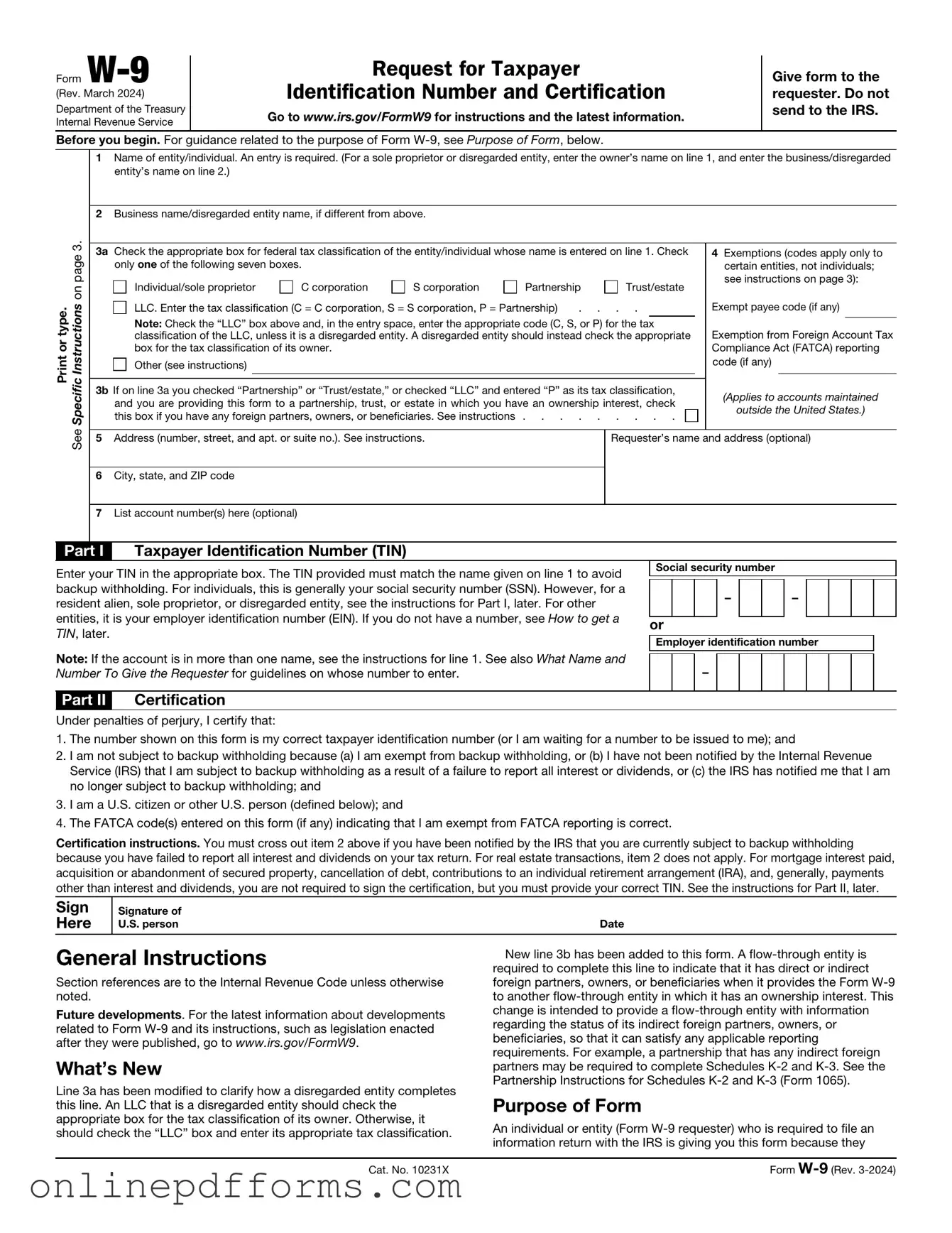The IRS W-4 form is often compared to the W-9 because both documents are used for tax purposes. The W-4 form is filled out by employees to indicate their tax withholding preferences. This means that employees can choose how much tax should be taken out of their paychecks. In contrast, the W-9 is used by independent contractors and freelancers to provide their taxpayer identification information to clients. While the W-4 focuses on withholding, the W-9 is about reporting income accurately.
The 1099 form is another document similar to the W-9. While the W-9 collects taxpayer information, the 1099 form reports income earned by independent contractors and freelancers. Clients use the information from the W-9 to complete the 1099 form at the end of the tax year. Therefore, both forms are crucial in ensuring that the IRS receives accurate income reporting for self-employed individuals.
The IRS Form 1040 is also related to the W-9, as both are part of the tax filing process. The W-9 provides necessary information for clients to report payments made to contractors, while the 1040 is the individual income tax return that taxpayers use to report their total income. Essentially, the W-9 helps gather information that will later be summarized in the 1040 form.
The Form 1096 serves as a cover sheet for submitting paper 1099 forms to the IRS. While the W-9 is about collecting taxpayer information, the 1096 is about reporting that information to the IRS. Both forms work together to ensure that the IRS has a complete picture of income paid to independent contractors throughout the year.
The IRS Form SS-4 is another document that has similarities with the W-9. The SS-4 is used to apply for an Employer Identification Number (EIN), which is often required for businesses. When a business completes a W-9, it may provide its EIN instead of a Social Security Number. Both forms are used to identify taxpayers, but they serve different purposes in the tax system.
The Form 4506-T is related to the W-9 in that it allows taxpayers to request a transcript of their tax return. While the W-9 provides information for reporting income, the 4506-T can help verify that information if needed. Both forms can be essential for individuals who need to confirm their income for loans or other financial matters.
The IRS Form 941 is another document that can be compared to the W-9. The 941 form is used by employers to report payroll taxes. While the W-9 is focused on independent contractors, the 941 is for employees. However, both forms are part of the broader tax system and help ensure compliance with IRS regulations.
Finally, the Form 1065 is similar in that it is used for partnerships to report income, deductions, and other tax-related information. While the W-9 is used by individuals to report their taxpayer identification, the 1065 is a collective reporting form for partnerships. Both forms are important for ensuring that the IRS receives accurate information about income and taxes owed.
